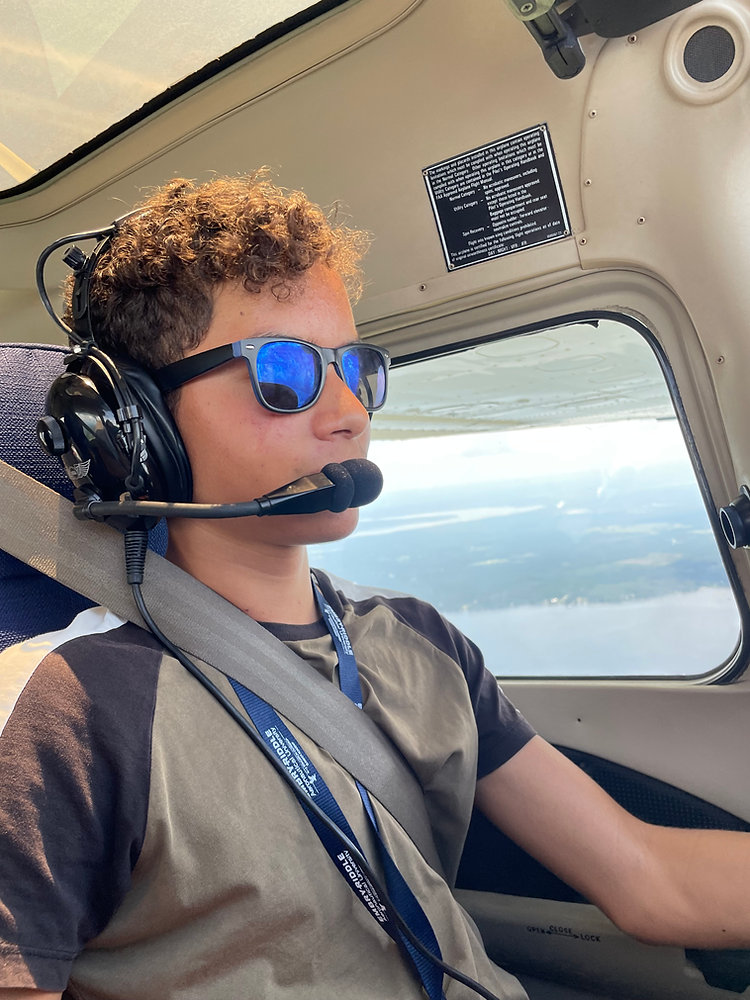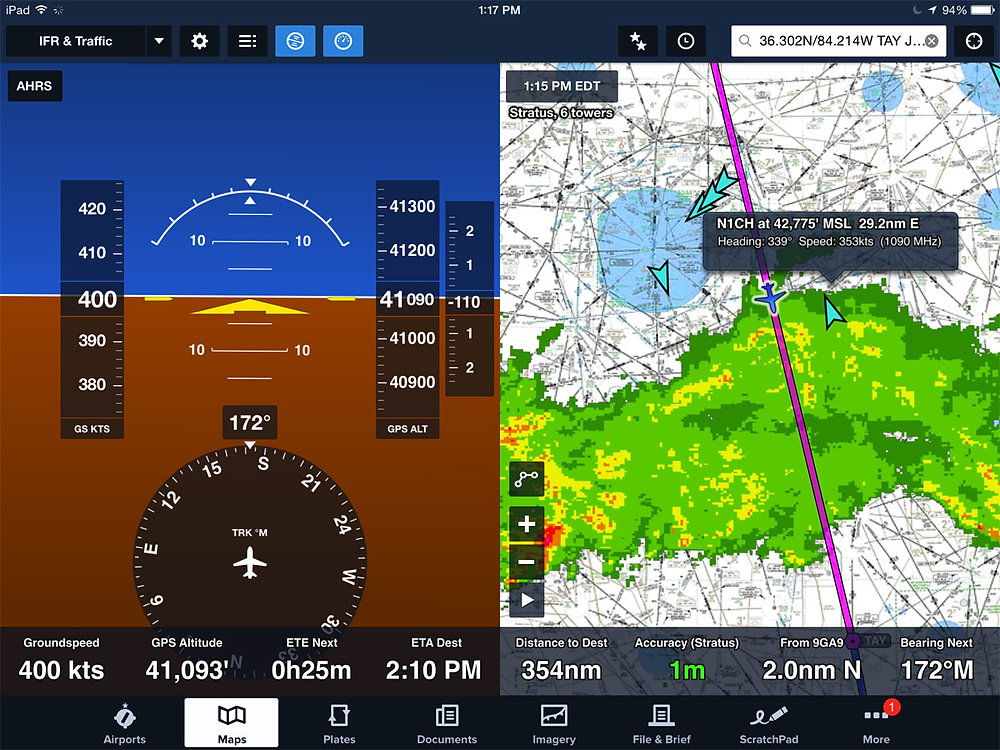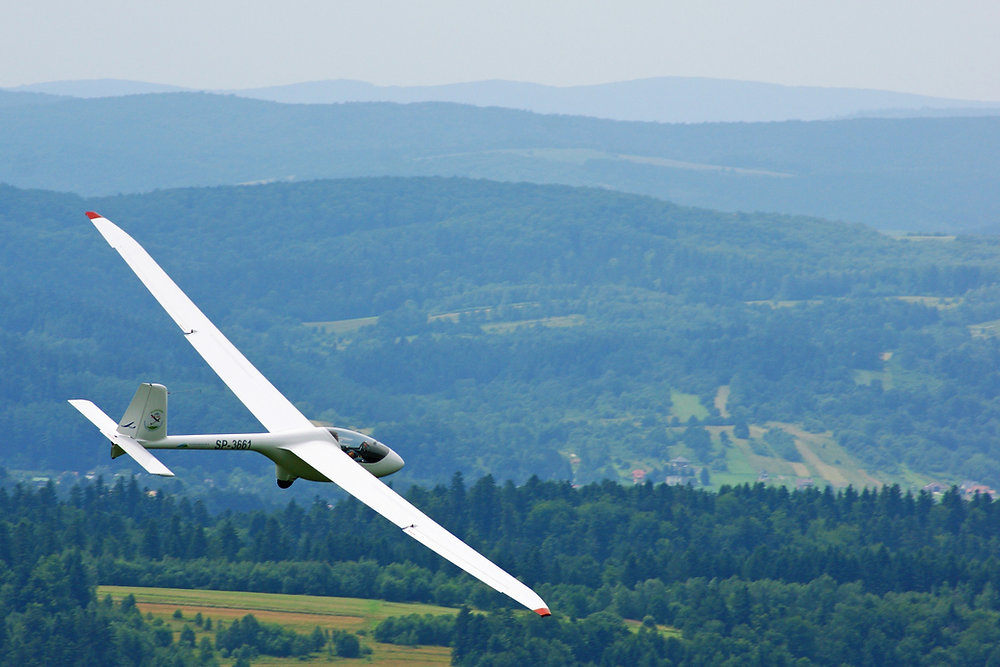

If you are about to being your journey as a student pilot, one of the things you will start hearing about early on in your training is VFR versus IFR. So, let’s talk about what that is all about!
Aircraft flying in the National Airspace System operate under two basic categories of flight: Visual Flight Rules (VFR) and Instrument Flight Rules (IFR).
Visual Flight Rules means that the aircraft is intended to operate in visual meteorological conditions (i.e., nice and clear weather). You should avoid clouds, heavy precipitation, low visibility, and otherwise adverse weather conditions under VFR. Most general aviation flying and flight training take place in visual meteorological conditions.
Instrument Flight Rules implies that the flight may operate in instrument meteorological conditions (meaning cloudy or otherwise adverse weather conditions). However, many aircraft may operate under IFR while completing the entire flight in visual meteorological conditions. Just because you can fly in the clouds or less than acceptable weather under IFR doesn’t mean you should!
IFR flying has many benefits. Often the equipment on board allows for very precise flight along a route that is more direct than the twists and turns that might be required to dodge airspace and some weather under VFR. IFR also allows an aircraft to depart in weather that is less than required for VFR, and enter the clouds once the IFR clearance has been received. It allows pilots to get above the clouds to smoother air, and air traffic control provides a watchful eye and will bring to attention any potential traffic hazards.
IFR provides efficiency, additional safety, and usually consistent contact with air traffic control, but it requires that pilots follow an exact pre-determined/pre-planned flight route. Deviations are allowed in case of emergencies, diversions, traffic and weather avoidance, but generally air traffic control expects you to fly the route and altitude you were given, which is called a clearance.
VFR flying, however, provides you the freedom of flying any route and altitude you choose, barring specific airspace limitations. General aviation enthusiasts flying for fun will often fly VFR. Pilots will also be limited to VFR if their aircraft is not equipped with the required equipment for IFR flight, or if they do not hold the required instrument rating to act as pilot-in-command on an IFR flight plan.
Choosing whether to fly VFR or IFR depends on several factors, including equipment available on the aircraft, current and forecast weather conditions, and the goals of the flight. However, as a student pilot you will fly VFR when conducting cross country flights with your instructor.
Here are some useful tips and insights that I found which may help you in VFR flying:
Flight planning is the foundation of every successful VFR flight. At the beginning your instructor will do the flight planning for your, but as you get closer to your solo flight, you will have to start taking on that responsibility.
First, begin by assessing the weather conditions, checking NOTAMs (Notice to Air Missions), and studying sectional charts. Identify landmarks, waypoints, and airfields along your route. Consider airspace restrictions and regulations that may affect your flight. A well-thought-out flight plan sets the stage for a smooth and efficient VFR journey.
One of the most important factors for a safe flight is the Pre-Flight Checks. It’s important to inspect the aircraft for any visible damage or malfunctions. Verify fuel levels, oil quantities, and control surfaces. Ensure that navigation and communication equipment, as well as lights, are in proper working order. This may initially take you a while, but with time you will become more proficient.
3. Sectional Charts and Navigation:
Sectional charts are indispensable tools for VFR pilots. Familiarize yourself with the symbols, abbreviations, and legends on the charts. Learn to interpret different airspace boundaries, obstructions, and navigation aids. Plan your route using visual landmarks, rivers, highways, or mountains. You can use pilotage (navigation by reference to landmarks or checkpoints) and dead reckoning techniques to maintain course and track your position. Regularly cross-reference your position with sectional charts to ensure accurate navigation. This is much easier if you have avionics that allow a better situational awareness.
4. Weather Considerations:
Weather awareness is vital for safe VFR flying. Stay informed about current and forecasted weather conditions along your route, using METAR or ATIS. Monitor temperature, cloud cover, wind speed, and visibility. Avoid flying in marginal weather, such as fog, thunderstorms, or strong crosswinds. You are the pilot in command so make the decision of flying with your current capabilities and not the aircraft’s limitations. Be prepared to divert or delay your flight if weather conditions deteriorate. Always prioritize safety over pressure and schedule!
5. Traffic Scanning and Collision Avoidance:
Maintaining situational awareness and vigilance for other aircraft is critical during VFR flights. Continuously scan the sky for traffic, both visually and using the aircraft’s instruments. If you have passengers, brief them on helping you find other aircrafts to avoid collision. Actively look for other aircraft, especially near airports or high-traffic areas. Stay vigilant, communicate intentions clearly on the radio, and be prepared to take evasive action if necessary.
6. Communications and Radio Procedures:
Personally, I find speaking on the radio the most stressful part of flying, but establishing effective communication is something you learn to do over time and it is essential for safe VFR operations. Familiarize yourself with standard phraseology and radio procedures. Practice concise and clear radio transmissions. Prioritize listening to ATC communications and be prepared to comply with instructions. If ever confused don’t be afraid to ask again
and/or speak slower. When communicating with other pilots, use plain language and be aware of frequency congestion. Good communication enhances situational awareness and promotes airspace safety.
7. Emergency Preparedness:
Finally, even with good planning, emergencies can occur at any time during the flight. Be prepared for contingencies. Familiarize yourself with emergency procedures specific to your aircraft and always brief before departing or landing. Practice emergency maneuvers such as
stalls will prepare you to react faster in case of an emergency. It is important to learn to aviate, navigate, and communicate effectively under stress. Always prioritize flying the aircraft over communication, if you’re under too much workload in an emergency situation!
Discover more from reviewer4you.com
Subscribe to get the latest posts to your email.




